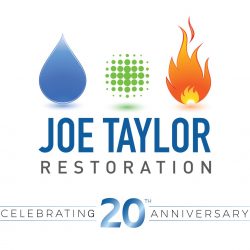Flooring and Water Damage
Date
Friday, January 19, 2018
Date
Friday, January 19, 2018
 As you all know, we do water restoration. And because that’s what we do, we see A LOT of wet floors. Flooring of all kinds, flooring and water damage, flooring we make every attempt to save. Although water damage can affect any part of a home or business, the most common rooms we work to restore are bathrooms, kitchens and laundry rooms.
As you all know, we do water restoration. And because that’s what we do, we see A LOT of wet floors. Flooring of all kinds, flooring and water damage, flooring we make every attempt to save. Although water damage can affect any part of a home or business, the most common rooms we work to restore are bathrooms, kitchens and laundry rooms.
So what types of flooring fare best in these rooms, particularly in water damage situations?
1. Porcelain or Ceramic Tile
Unequivocally, porcelain tile, part of the ceramic tile family, holds up the best when it comes to flooring and water damage. Porcelain tile is certified as such if it has a water absorption rate of 0.5% or less. It cleans up well and bravely resists even standing pools of water, that is, if standing water is addressed immediately.
2. Vinyl: Sheet, Plank, or Tile
Vinyl is cost efficient, durable, easy to install, and comes in sheets, planks or tile. It is ideal for bathrooms, kitchens, laundry rooms, and basements because it is virtually waterproof. In many cases, vinyl can stand up even to flood-type conditions if the situation is quickly remediated.
3. Natural Stone
Common natural stone flooring includes slate, marble, limestone, travertine, granite, and sandstone—each of which has slightly different properties. Some of these are more porous than others, but in general, natural stone, when sealed and cared for, holds up well in moisture-filled environments. However, depending on the extent of the water damage, staining, cracking and the like may occur.
Having one of the above types of flooring does not ensure that it will not need to removed in a water damage scenario. But they have a much better chance of survival than other types of flooring, particularly if the water damage is addressed right away.
Other types of flooring we often see include engineered wood, hard wood, laminate and carpet. The survival of the wood and laminate options depend largely on the precision of the initial installation and how tight the seems are between planks. We have saved many hard wood floors in our time, but laminate and engineered wood is sometimes more difficult to salvage. Carpet is a whole different conversation dependent largely on the type and severity of the water damage. Carpet can be dried, but often needs to be removed for proper restoration to take place.
Regardless of the type of floors you’re standing on in your home or business, if you’re standing in water, contact Joe Taylor Restoration immediately. We will make every effort to save your floors and anything else we can, as long as it does not compromise the drying and restoration process or allow mold to set in. When you’re dealing with flooring and water damage, contact the company with the experience and expertise to get the job done right.

